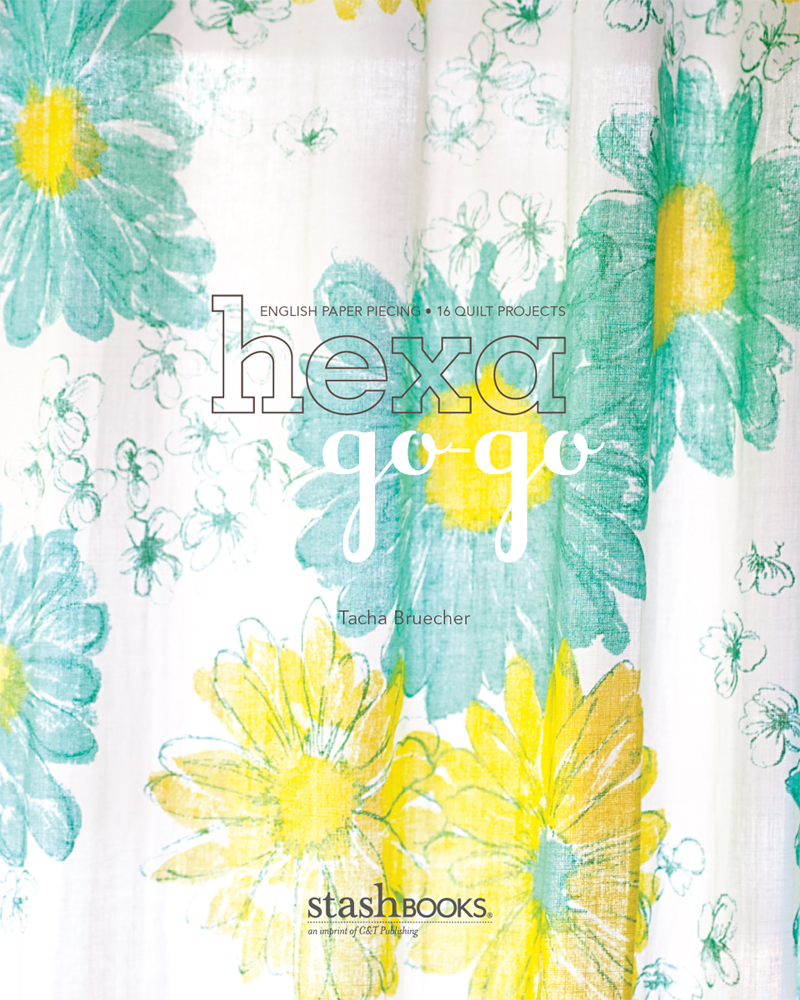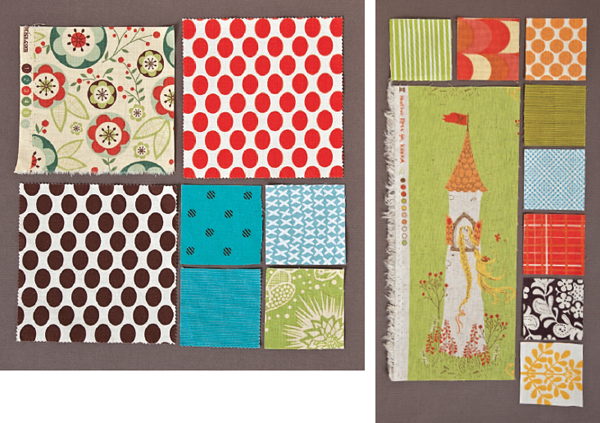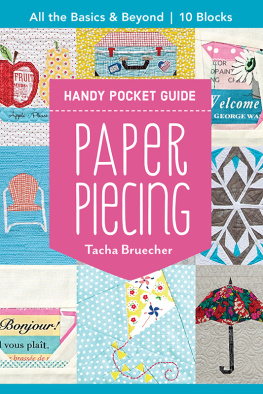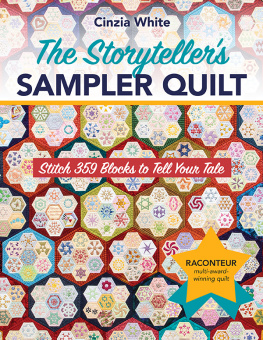
Dedication
For Amelie, Hanna, and Luis: Ihr seid die Besten in der ganzen Welt!
Acknowledgments
Thank you to Cynthia, Diane, and Susanne for your help throughout the writing of this book. You are all brilliant.
Thank you to Nina from http://1001quilt.de for your help in quilting the Over the Rainbow and Dropped Diamonds quilts.
A huge thank-you to Luis for keeping me going and for keeping the girls amused while I worked! You mean everything to me.
Thank you, Mum and Dad, for your encouragement in everything I take on.
A huge thank-you to everyone I have met through Flickr and who helped me take my quilting to a new levelin particular the members of Bee Inspired.
Lastly, I want to thank my Fat Quarterly familyKaty, Brioni, John, Kate, Nova, and Aneela. You guys rock!
Foreword
Being in general a fairly impatient type, I never thought I would take to English paper piecing. Too much work, too much time. But in reality I find it highly therapeutic. Snuggled up on the couch in the evening, at the playground with my girls, or on a long car ride, I take my hexagons with me. One or two here and there, and before you know it you have a block. They are the perfect fit for an urban quilter. Hexagons can be slipped into your bag and stitched up in no time on the commuter train. They are so wonderfully portablequiltings answer to knitting!
Most quilters I come across are a bit apprehensive about hexagons. I find that they would like to try a project but are not sure where to start or how to make a quilt that is contemporary looking. Cast away your fears with this book. Learn how forgiving hexagons are and how you dont need to make an entire Grandmothers Flower Garden quilt to be a hexagon quilter.
The projects in this book combine some of the current quilting trends with hexagons, but none are 100 percent hexagons. Each project takes traditional hexagons and adds a modern twist such as wonky piecing, white sashing, embroidery, or raw-edge appliqu.
Many of the projects are perfect for using up scraps. Whether you are drowning in a fabric stash that you wouldnt use up even if you sewed from now to eternity, or you just have a few odds and ends tucked away at the back of the cupboard, you will find a project in here for you.
I also have included some time-saving concepts from the quilting world. The Over the Rainbow quilt () is quilted using the quilt-as-you-go method and shows that you can quilt a queen-size quilt on your home machine.


introduction
what is english paper piecing?
and do i have to be english to do it?
Hmm good question! I think it is only coincidence that I am English. I certainly got my first taste of English paper piecing in needlework classes at my school in England. But having lived in the United States and now in Germany, I am pretty confident in saying that you can be any nationality!
English paper piecing is a technique in which fabric is basted to paper templates and then hand stitched together to form tessellations. The technique dates back to eighteenth-century England. The first hexagon pattern was printed in 1835 in the American magazine Godeys Ladys Book. At this time all things English were highly fashionable in America, and hence it was called English paper piecing for marketing purposes. Nowadays it would be called something terribly high tech and complicated such as digitally generated template technique, or perhaps iPatch!
English paper piecing can be used for shapes such as diamonds, triangles, hexagons, pentagons, and so forth. This book concentrates on the hexagon because it is one of the most versatile shapes. The wide angles in a hexagon make basting easy, and the hexagon shape can be used by itself to make lots of patterns without introducing other shapes.
This book contains projects for everyone. Small, quick projects are offered for those with a busy lifestyle or who are new to English paper piecing. For readers who are experienced with hand stitching and quiltmaking, more involved patterns are included.
hand stitched?
Yes, I did say hand stitched! And you might well ask, Whyin this day and age of sewing machinesdo I want to learn this technique? There are a number of reasons.
English paper piecing (EPP) allows for much better piece alignment than machine piecing. It is easy to get all your points and corners to match up. You can tackle complicated projects with the confidence that your finished project will look great.
EPP is portable. While I was working full time, I rarely got to my sewing machine. With EPP, I can take my sewing project with me wherever I go. The commute to work became my sewing time. Now at home with my small children, I can slip some hexagons into my bagor into my Go Faster Box Bag ()and stitch to my hearts content while my children play in the park.
Hand stitching is amazingly therapeutic. It gives you time to sit still and thinksomething we forget to do these days. Your hands are busy, and yet your mind can wander. My main problem is that while I am stitching, I am busy thinking up more projects that I want to stitch!
making your projects modern
Modern and contemporary are labels open to all sorts of interpretation. But in general, design factors such as color palette, fabric choice, and block settings are all important in giving your project a modern edge.
Color palette
Plenty of places will spark inspiration for modern color palettes. My favorite place to go is the photo-sharing site Flickr.com. Check out all sorts of imagesnot just those showing quiltsto find different color palettes that inspire you. Such photos also can help you visualize how different proportions of color can create different effects in your quilts.

Images courtesy of Brooke Biette (apriltwoeighty.com)
Hexagon quilts are great for making a feature of your favorite prints. If you already have a great modern print you want to use, then pick out colors from within that print to make your color palette. This is even easier if the selvage has color dots printed on it.
When planning your color palette, remember how important different values are in creating lively, interesting quilts. Value is the lightness or darkness of a color; all quilts need some contrast in values to make them pop. Are most of the colors you have chosen light to medium value? Then choose a darker value to complement them, and vice versa.

Fabric choice
I like to use many different prints of each color in my color palette to make my quilts more interesting. Rather than using a yard of one print, I would rather use fat quarters of four or five different prints of the same color. I find that this adds depth and keeps the viewers eye moving around the quilt.
Try breaking away from the usual quilting fabric choices; there is no need to stick to quilting cotton. Combine them with fabrics like linen or voile to give your quilts added texture and depth.
Next page













